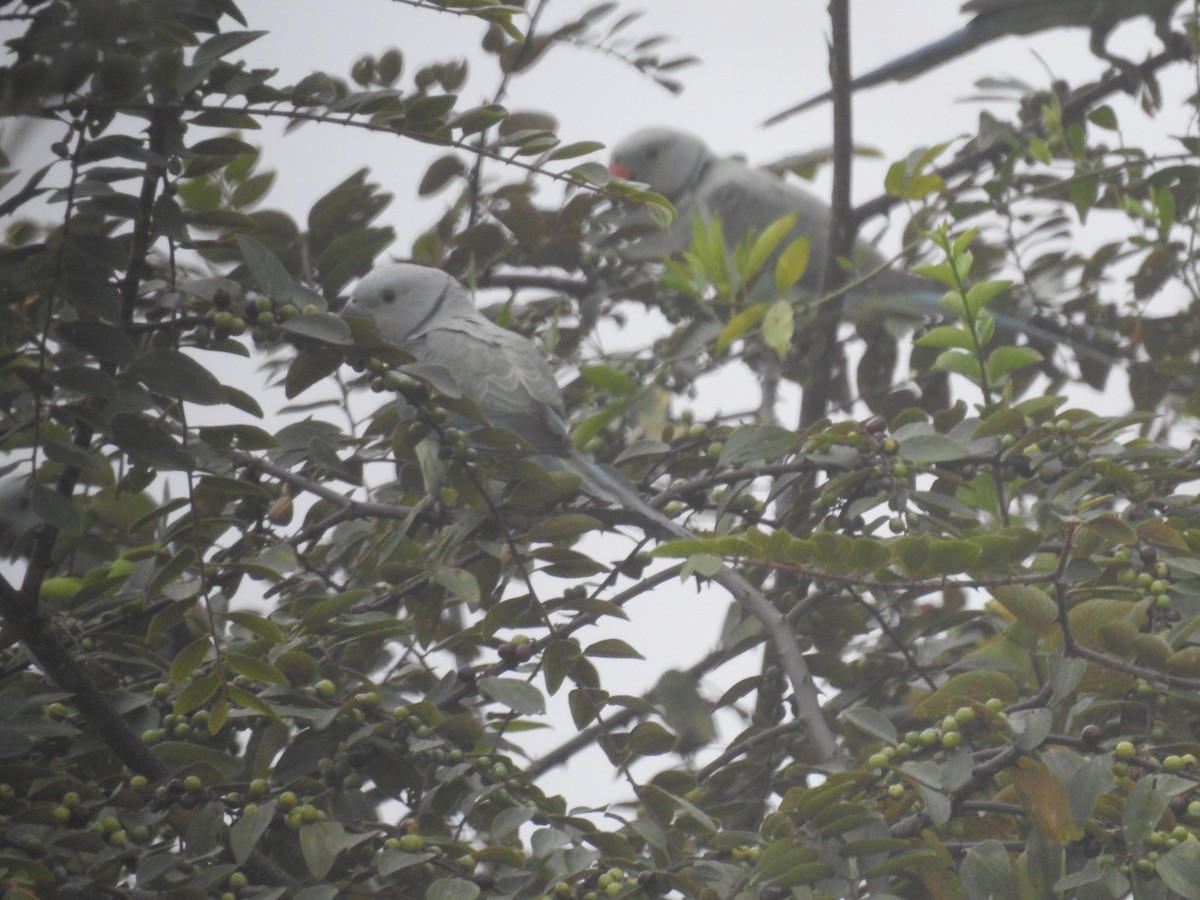Blue-winged Parakeet
A species of Ring-necked Parakeets Scientific name : Psittacula columboides Genus : Ring-necked Parakeets
Blue-winged Parakeet, A species of Ring-necked Parakeets
Botanical name: Psittacula columboides
Genus: Ring-necked Parakeets
Content
Description General Info
 Photo By Ashwin Viswanathan
Photo By Ashwin Viswanathan Description
The blue-winged parakeet is bluish grey with a long yellow-tipped tail. The black neck ring is complete in both males and females. The male has a bluish-green lower edge to the black collar and the upper mandible is red with a white tip while the female has an all black bill and has only the black collar. The female looks similar to the female of the plum-headed parakeet which however can be told apart by its broad yellow collar. Flocks move through the forest while calling out in a series of screeching keek-keek-keek calls. They breed in the dry season after the northeast Monsoon and the chicks fledge before the southwest Monsoon in June. They nest in holes in trees (often tall Mesua ferrea species), especially old woodpecker and barbet nests. The birds begin breeding in December and eggs are laid in December and January. The usual clutch was 4 eggs which hatch after about 23 days. The female initially broods with the male bringing food and later the male takes over. The chicks fledge in about a month and leave the nest. Chicks are sometimes trapped for trade. Individuals have been observed feeding on the leaves of Loranthus longiflorus. The closest living relative of this species is Layard's parakeet which is endemic to Sri Lanka. 
Size
38 cm
Nest Placement
Cavity
Feeding Habits
Blue-winged Parakeet primarily feeds on grains, seeds, and fruits, especially figs. They forage on Erythrina and Grevillea for buds, petals, and nectar. Blue-winged Parakeet also acts as a pest on Sorghum, other cereals, and orchard fruits, indicating its varied foraging behavior and dietary preferences.
Habitat
The blue-winged Parakeet primarily inhabits tropical evergreen and moist deciduous forests. They can also be found in regenerating secondary growths, abandoned plantations, and adjacent cultivated clearings. These birds prefer forested regions and areas that offer a mix of both mature woodland and some level of human-modified landscapes.
Dite type
Herbivorous
General Info
Feeding Habits
Bird food type
Distribution Area
This parakeet is restricted to the Western Ghats south of about 19°N (Kasa, north of Bombay) to Kerala, extending into the hills of the Palnis and Nilgiris as well as the adjoining Eastern Ghats including the Biligirirangan range and possibly further east in the Kolli Hills in India. 

 Photo By Ashwin Viswanathan
Photo By Ashwin Viswanathan Scientific Classification
Phylum
Chordates Class
Birds Order
Parrots Family
Parrots Genus
Ring-necked Parakeets Species
Blue-winged Parakeet